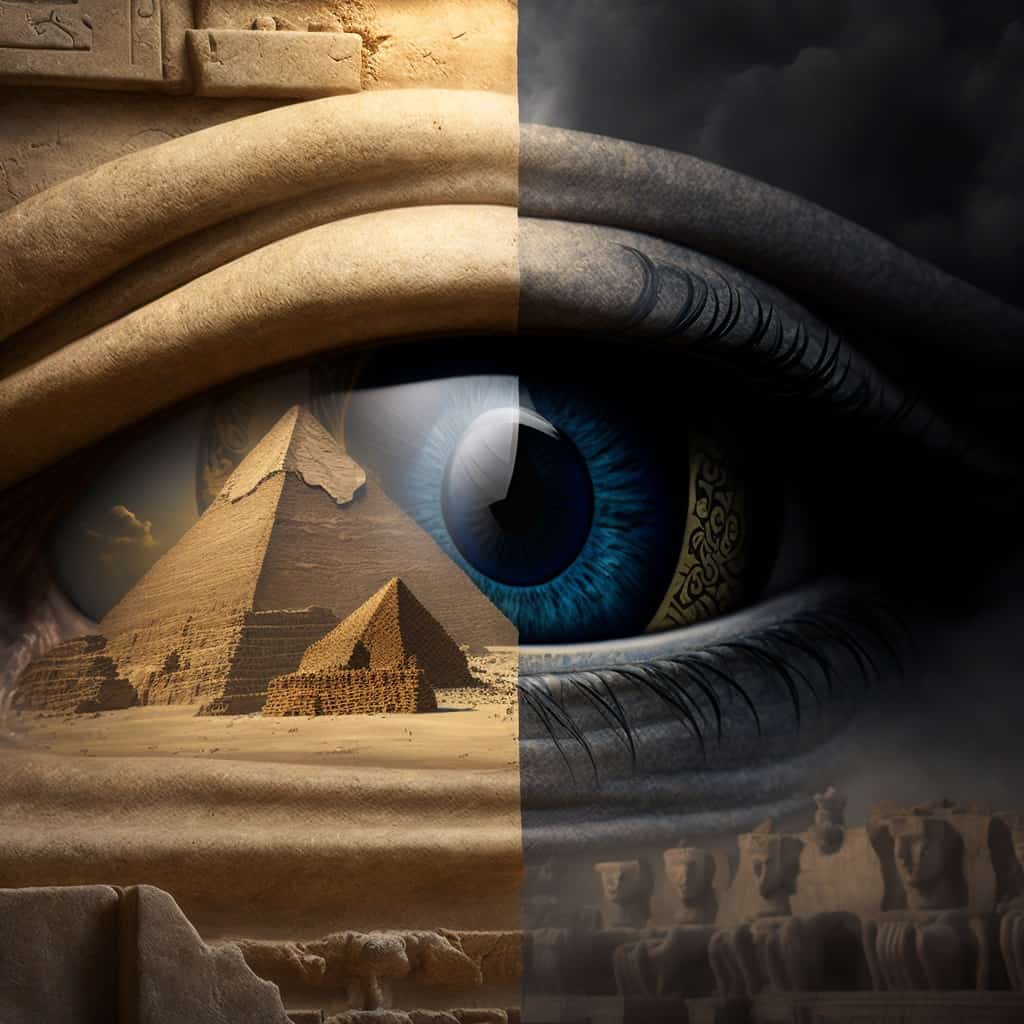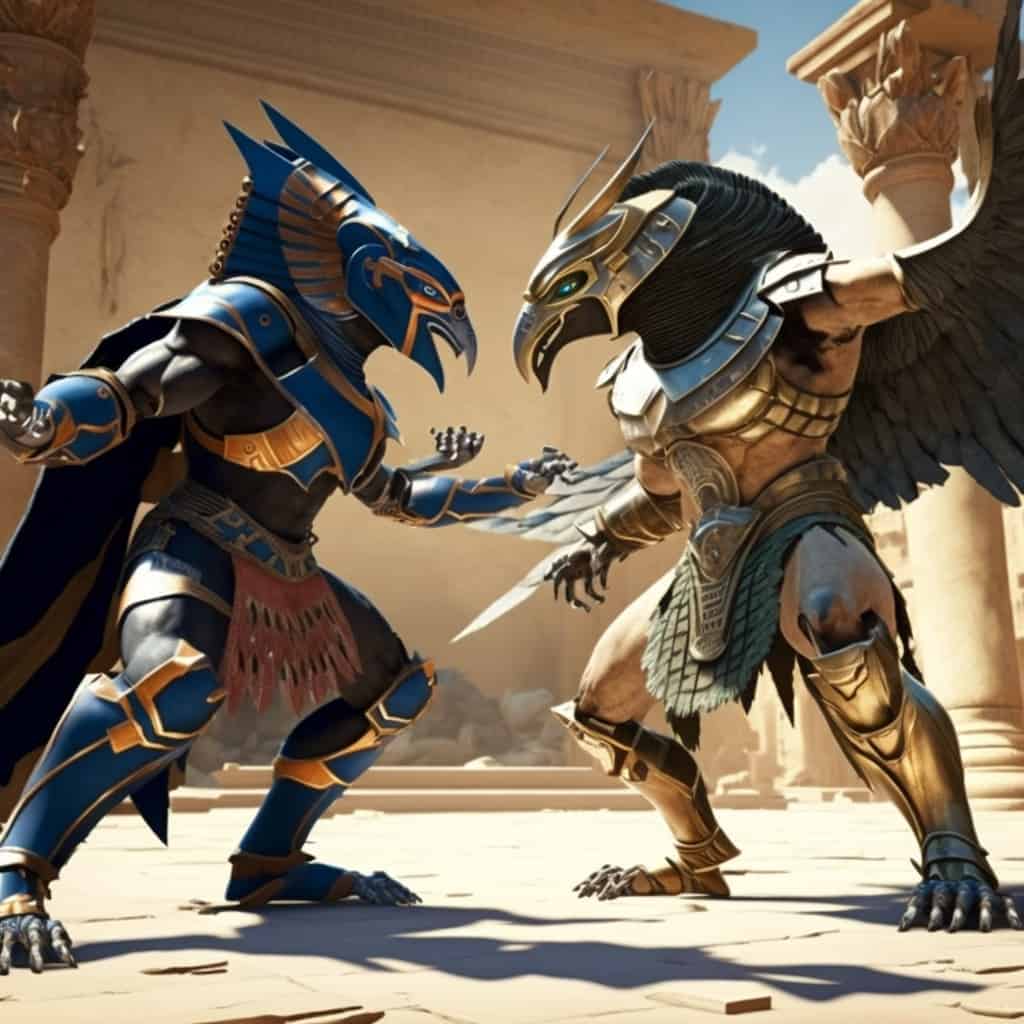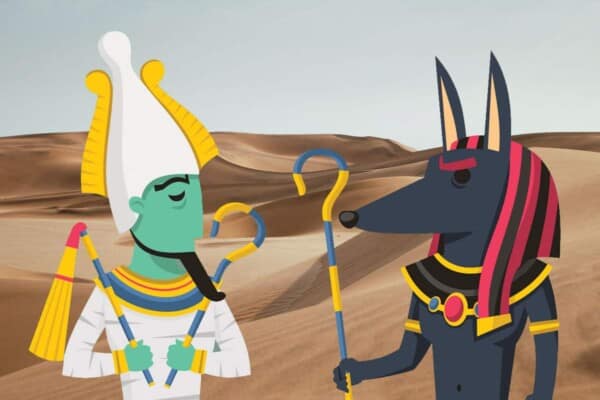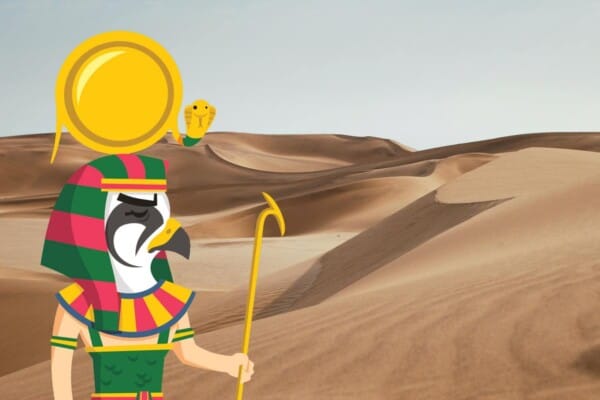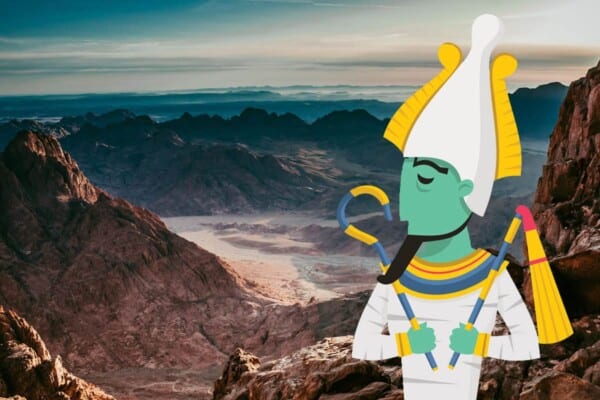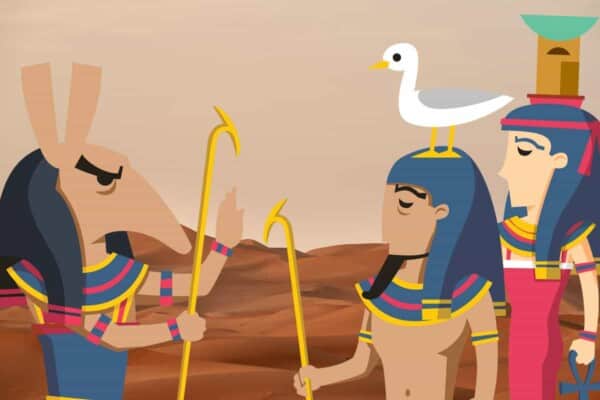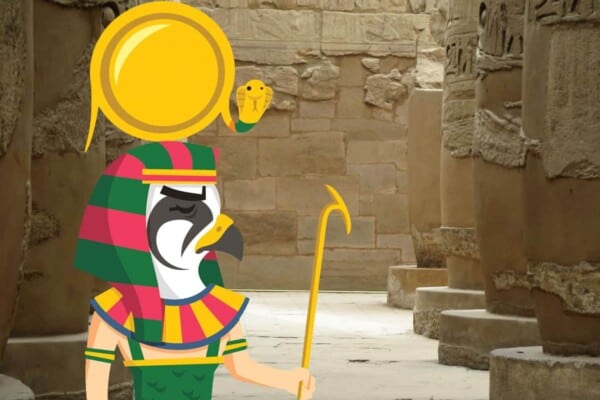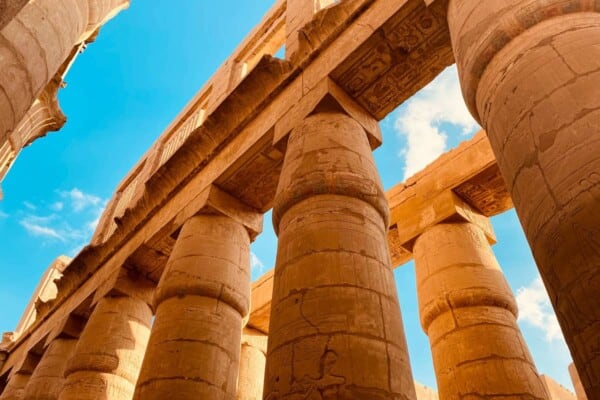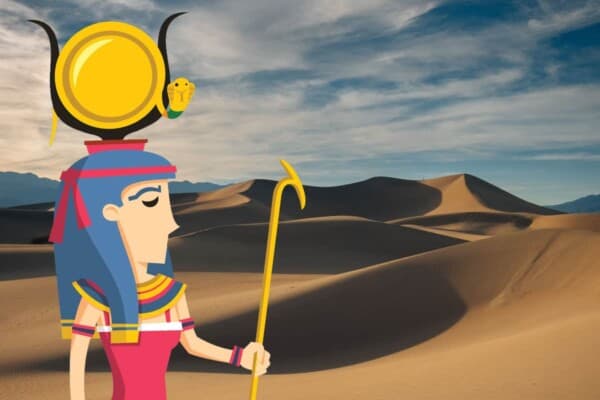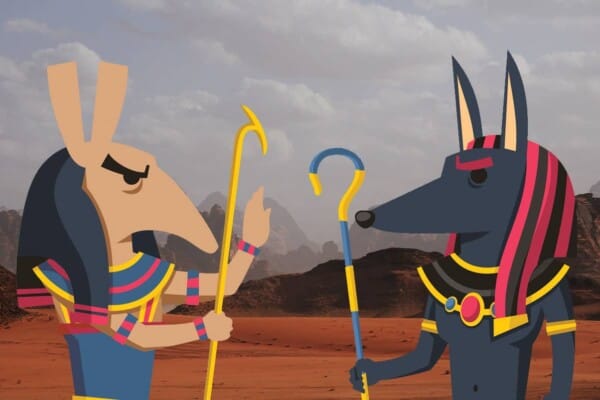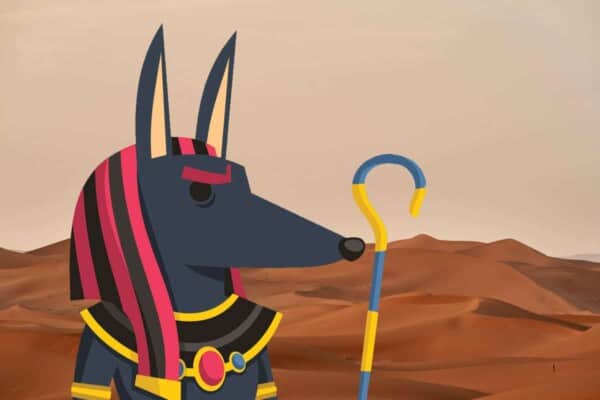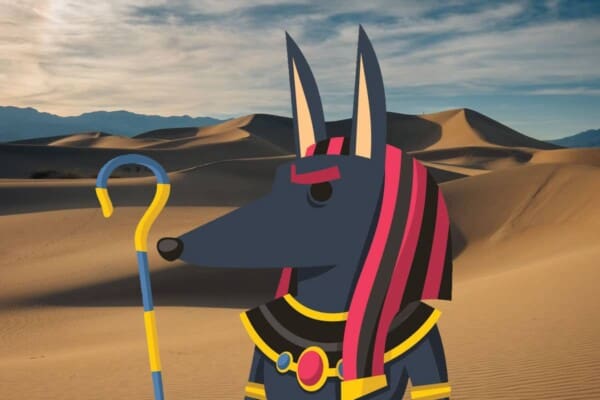Egyptian mythology and hieroglyphs have always been a popular subject to study, especially when you consider just how many fascinating Egyptian symbols there are for you to research.
By far some of the most easily recognizable ones are the Eye of Ra and the Eye of Horus. Even though there are plenty of aesthetic differences that separate the two from one another, many people still believe them to be one and the same.
As such, for this article we decided to give you a brief rundown of the main differences that you’ll find between the two, starting off with the basics:
What is the Eye of Ra?
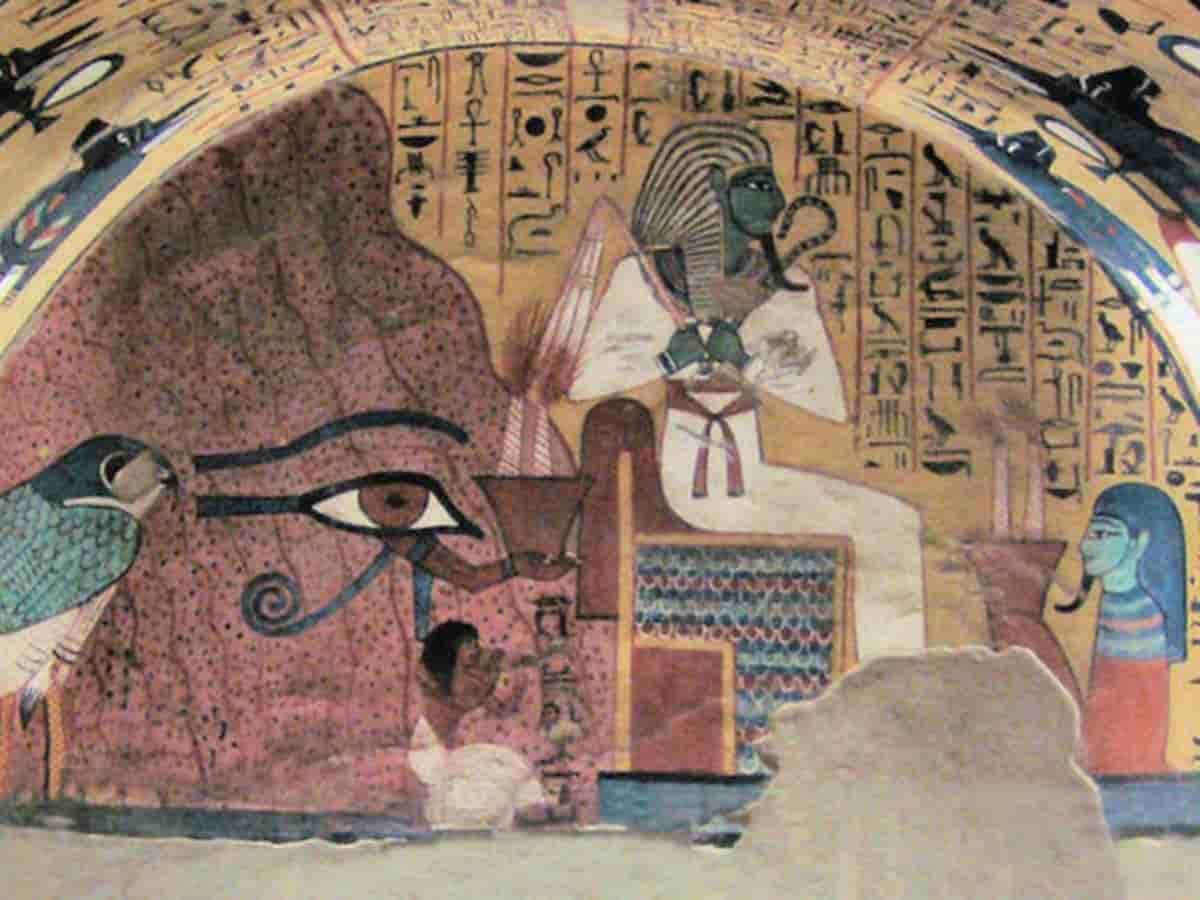
The first of these two is none other than the Eye of Ra. It appeared simultaneously with the cult of Ra which made themselves known after the unification of the Lower Egypt with the Upper Egypt kingdoms.
You can quickly tell when you’re dealing with the Eye of Ra because it looks like a large bronze or golden disc that has two cobras on each side. The disc is meant to represent Ra, aka the Sun, and the two cobras represent royalty.
This isn’t the first time that the cobras on each side have been showcased though, as they were first used on an even older Egyptian symbol. The symbol was known as the Uraeus royal cobra symbol of the Lower, or northern, Egyptian Kingdom.
As you can probably tell by now, these two cobras are meant to represent the king and the royal family, with it being adorned on the red Deshret crown.
On top of that, the Uraeus was also associated with the goddess Wadjet, an older deity that existed before the unification of the Lower Egypt with the Upper Egypt kingdoms.
As soon as the unification happened though, the cult of Ra started spreading and before long they also adopted the snakes into their symbolism.
Interestingly enough though, the Upper, or southern, Egyptian Kingdom also had its very own deity, namely the vulture goddess Nekhbet.
She was known for having a very unique looking special headdress known as the Hedjet white vulture crown.
The two symbols were then unified into one, becoming the main symbol that the pharaohs of the unified Egypt wore on their crowns. But, at the same time, only Wadjet’s Uraeus cobra was added to the Eye of Ra symbol.
Eye of Ra Symbolism
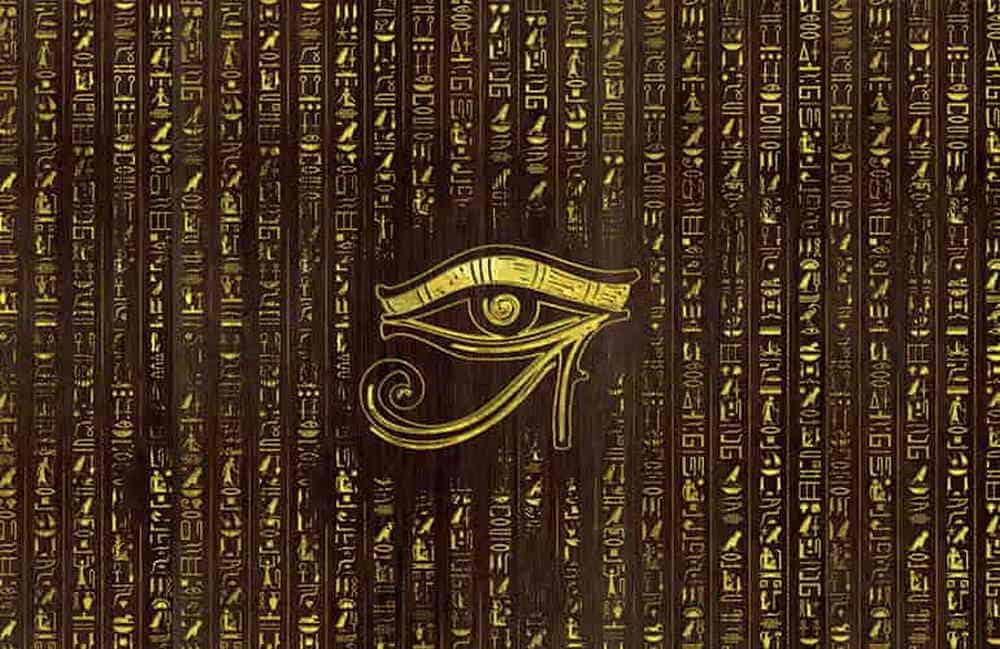
While it is pretty simple to say that the Eye of Ra symbol was meant to represent the eye of the God, it’s not that simple.
In fact, the symbol represented here was also viewed as the sun itself as well as the weapon that Ra wielded against anyone that dared to oppose him.
On top of that, the Eye of Ra was also seen as its very own deity, or more specifically as the feminine counterpart of Ra.
An interesting fact about it though is that even though it was the feminine counterpart of Ra, it was nowhere near as benevolent as he was. In fact, it was known for being quite vengeful and wrathful.
These qualities may not make a lot of sense considering the fact that Ra was known as a very just and righteous deity, but do keep in mind that this is a weapon we’re talking about after all.
The symbol itself was also associated a lot with female deities from the Egyptian mythos, including Sekhmet, Bastet and Hathor.
The two cobras we mentioned above also made it so that people associated the symbol with Wadjet herself.
Because of the unification of the symbols actually, a lot of her believers ended up serving the cult of Ra, as they believed that Wadjet lived on as a part of Ra or as his consort.
This is actually why you will often times find the symbol also being referred to as the Wadjet by historians.
Regardless, it was most often times worn by pharaohs as a way to showcase their close relation with the God of the Sun. They would plaster it on their crowns as a way of indicating the fact that they were chosen by Ra himself.
Early on after the merger of the Upper and the Lower Egyptian Kingdoms, the Eye of Ra started to be portrayed in two different places, namely on the red Deshret crown and the white Hedjet crown.
Even so, the sad truth is that the symbol is not the first thing that people think of when they picture the Eye of Ra.
Instead, people tend to picture a different design altogether. But what is this design and why is it mistaken for the Eye of Ra? In order to answer this question, let us first go over the Eye of Horus and its symbolism.
What is the Eye of Horus?
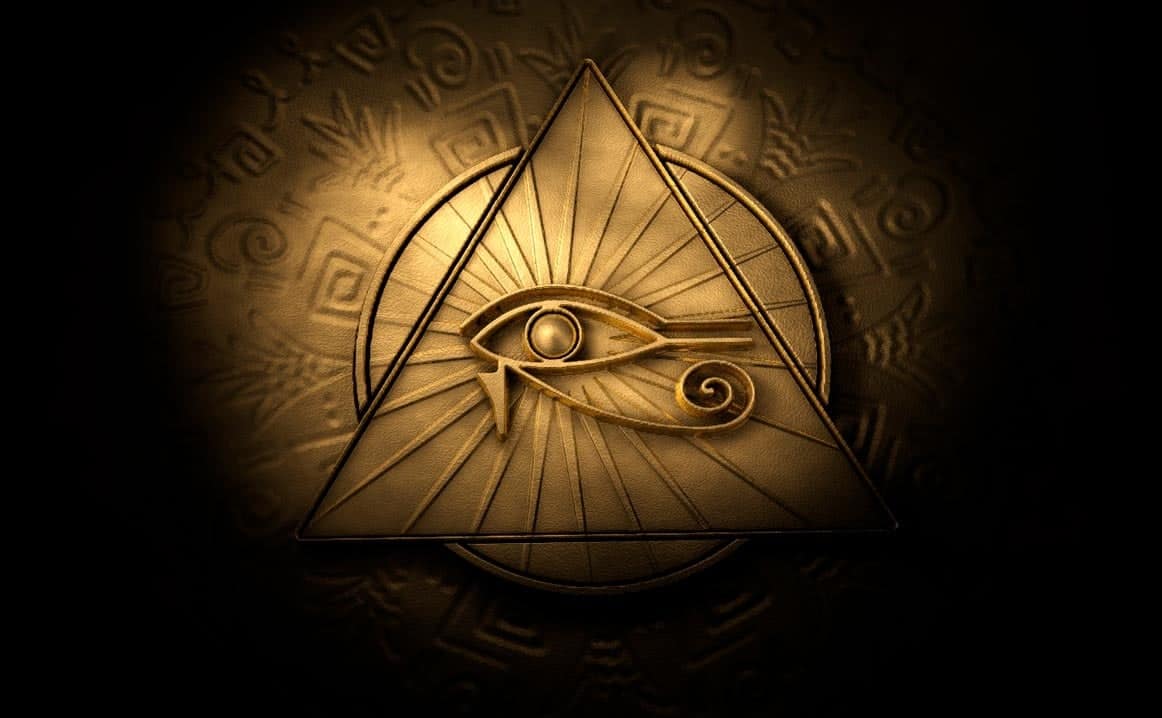
Many people look at this symbol and immediately think of the ancient God Ra, when in actuality it belongs to a god that is in an entirely different pantheon altogether.
The symbol actually pertains to the Falcon God Horus, the son of Osiris and Isis, and the nephew of Seth and Nephthys.
He is a member of the Ennead, aka the nine divine beings that the people of Helipolis are known to worship.
In fact, these two deities couldn’t be more different from one another, as the cult of Ra, aka the group that followed Ra, had almost gone extinct by the time the cult of the Ennead started to spread.
But regardless, it is a known fact that the followers of Ra eventually disappeared, with them mostly being replaced by the cult of the Ennead.
But the thing that you need to understand here is that the cult of the Ennead was never about one deity alone, quite the contrary actually.
This cult carried many myths of gods of this pantheon with it, and they spread like wildfire as more and more followers started joining their ranks.
The main idea that they proclaimed was that the Ennead were the ones that controlled death, resurrection and more.
On top of that, the second death of Osiris at the hands of his brother Seth was also a very important part of their mythos, since this act subsequently led to the birth of Horus.
Horus was known as the God of War and the Sky, and he was married to the goddess Hathor. He was the one that started the war against Seth for murdering Osiris, which in turn resulted in the creation of the Eye of Horus.
The War Between Horus and Seth
The Ennead mythos states that Horus fought against Seth on multiple occasions, with him winning some battles and losing others.
One of the most famous confrontations ended up with Horus removing Seth’s testicles, while in another it was Seth that had the upper hand, taking out Horus’ eye and shattering it into six different pieces.
These remains were then thrown into the wind, as Seth hoped that they would scatter across the land for him to never find them again.
This didn’t go as planned for Seth though, as eventually, the eye was pieced back together by Thoth or Hathor, depending on which legend you read this from.
But regardless of any of that, aesthetically speaking, let’s just say that there is no similarity between the Eye of Horus and the Eye of R.
The Eye of Ra looks like a big globe that is surrounded by two cobras, while the Eye of Horus looks like a stylistic drawing of a human eye. You may think that there is more to the design of the Eye of Horus, but realistically speaking, in order to draw it you just need to think of an eye and add in the details around it.
These details include a black pupil in the middle, an eyebrow and two squiggles, with one of them being shaped like a hook and the other one looking like a long tail that ends in a spiral.
While simplistic though, it is quite clear that a lot of thought went into the creation of this symbol. For one, it is made up of six different components, specifically the pupil, the two corners of the eye, the two squiggles and the eyebrow.
This was done specifically to represent the six pieces of Horus’ eye that were shattered and scattered into the wind by Seth himself.
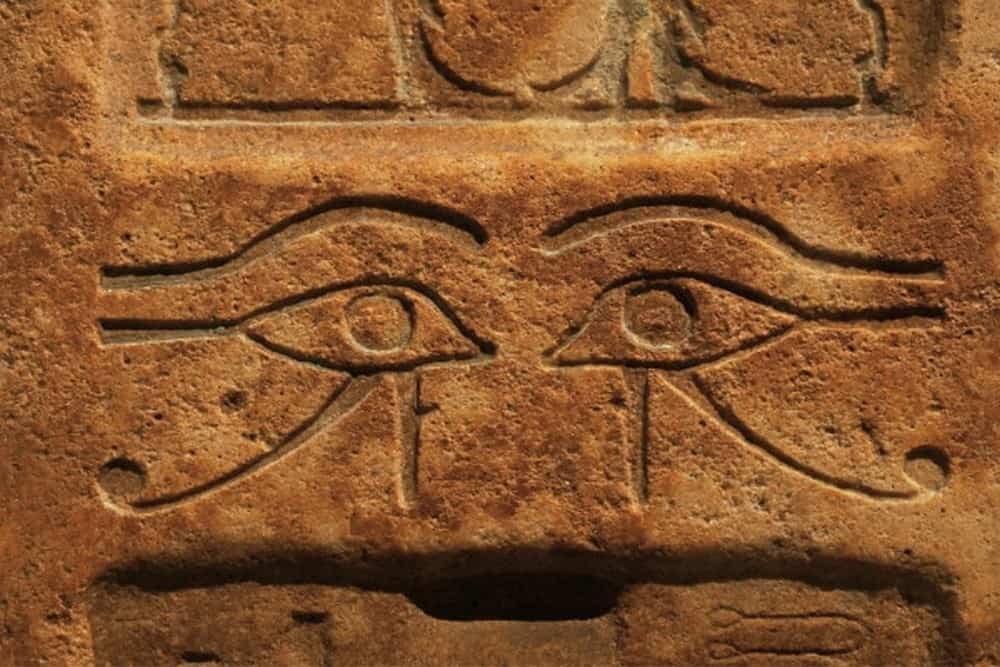
On top of that, in order to actually create the symbol, you will need to adhere to some very specific measurements, as they were all meant to symbolize a mathematical fraction, like for example:
- The left side was always ½
- The right side could only ever be 1/16
- The right pupil is always 1/16
- The pupil will never be anything but ¼
- The eyebrow was actually 1/8
- The stalk was always 1/64
- The curved tail was actually 1/32
The reasoning behind this is quite brilliant, and even though it is a metaphor, it still makes for a great showcase of just how brilliant the Egyptians were back then.
It all adds up to 63/64, which in itself is meant to indicate the fact that even after being put back together, the Eye of Horus will not be 100% completed.
On top of that, each one of these components was meant to represent the six human senses that we have.
The eyebrow was always the thought of the man, while the curved tail was supposed to represent a tongue and ergo the taste.
The hook was touch, and the pupil, as you can probably tell already, was meant to be the sight. The left corner was meant to indicate hearing and the right corner would always represent smell.
The cult of the Ennead was known for being highly spiritual, and this heavily reflected on their symbolism as the Eye of Horus was always meant to represent healing and rebirth of the soul.
The cult actually claimed that the Eye of Horus, by unifying all of the human senses, was a mirror to our soul, showcasing the unity of mind and the unity of being all at once.
As such, it isn’t too hard to believe that the Eye of Horus quickly became one of the most beloved symbols of Ancient Egypt, to the point where it is still being used to this very day.
Back then however, it was considered to be a symbol of inner peace, as the people that wore it were the followers of Horus, and they believed that by donning this symbol they would be protected from any threats to the soul.
It was found almost everywhere you could think of putting it, including on tombs, monuments, personal trinkets or just small belongings that people carried with them.
The Eye of Ra as a Reverse Eye of Horus
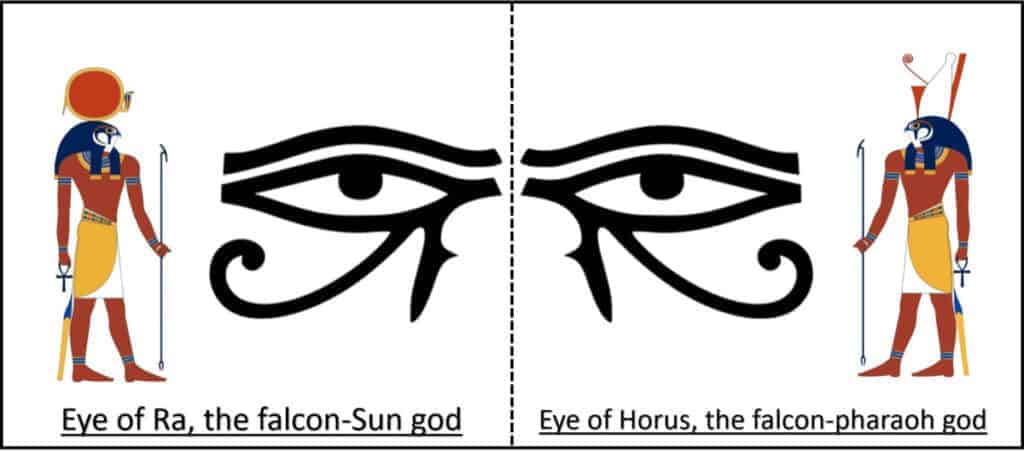
The main reason as to why the Eye of Ra is often times confused with the Eye of Horus is because there is an illustration out there which depicts the Eye of Ra as a mirrored version of the Eye of Horus.
Many people believed that this is because of a confusion among modern historians, but this couldn’t be farther from the truth.
Instead, this depiction simply shows the desperate means that the cult of Ra was willing to go to in order to capitalize on the cult of Ennead, as they were even willing to change up their symbol altogether to mimic theirs.
Even though the two gods had practically nothing in common with one another at first, some connections were made later on down the line which allowed the two cults to merge eventually.
One problem that they had to go through first though is the symbolism behind the two eyes. For one, the Eye of Ra is clearly meant to represent the sun while the Eye of Horus is more so related to the moon if anything.
This is when the cults decided to change the information around, making it so that the moon god Thoth would be the one to heal Horus’ eye, thus making it easier for people to accept the two deities together.
Before long, the two eventually merged though, with people accepting the fact that the Eye of Horus was the left eye counterpart to the Eye of Ra.
This isn’t as unheard of as you may think, as the long-lasting mythologies of Ancient Egypt all eventually merged into one another for the sake of prolonging their life.
This happened all across the globe back then, just look at the Maya and the Aztecs from Mesoamerica, or the Assyrians and the Babylonians from Mesopotamia and last but not least, Buddhism and Shinto from Japan.
Because of these rewritings, it is quite common to find multiple versions of the same gods and goddesses.
Take for example the goddess Hathor, as she first started off as being Ra’s wife, only to them become associated with Horus as soon as his cult started to take over.
These are all just different interpretations of the same stories that were spread back then, and while they may differ from one another they are all just different sides of the same coin.
Take for example Wadjet and pretty much most of the other deities that were worshipped before the cult of Ra.
The mythology took these old gods and goddesses and added them to the new mythos, and the exact same thing happened here with Horus too.
He used to be the son of Osiris and Isis, only for him to then be associated with the Moon thanks to his connection with Thoth.
Later on down the line he became associated with the sun as he rose up to become Ancient Egypt’s supreme deity.
This was made all the more incomprehensible by the fact that the cult of Ra took over once again after a while.
During this new age, a new version of Ra was born after he was combined with the god Amun, and through their fusion came Amun Ra. His new symbol was the reversed Eye of Horus, and it hasn’t changed since.
Conclusion
Both of these two symbols were some of the most important symbols of their time. The Eye of Ra is still found plastered across the crowns of pharaohs, while the Eye of Horus can be found pretty much anywhere you look in Ancient Egypt trinkets and objects.
While people may still confuse one for the other, just remember the fact that even the followers themselves didn’t know which was which for a time.

